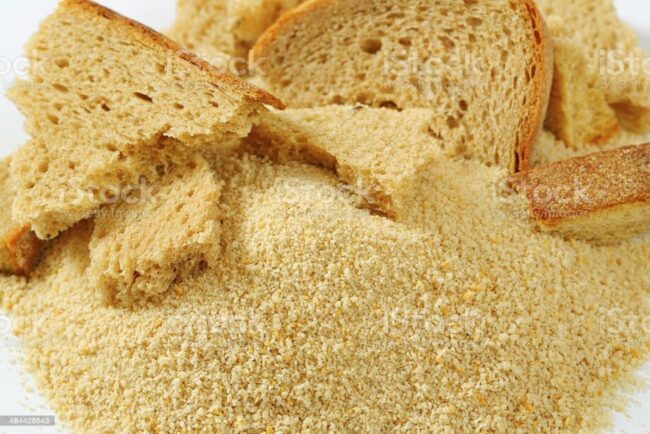Breadcrumbs are the unsung heroes of many dishes. Whether you’ve stumbled upon a pack at the back of your pantry or have just made your own, there’s always the nagging question: How long will they last? Let’s explore the intricacies of breadcrumb preservation.
Table Of Contents
−- The Essence of Breadcrumbs
- Different Types of Breadcrumbs and Their Characteristics:
- Shelf Life of Breadcrumbs
- Breadcrumbs and Moisture
- Preservatives and Breadcrumb Longevity
- Homemade vs. Store-Bought
- Reusing Old Breadcrumbs
- Signs Your Breadcrumbs Have Gone Bad
- Storing Breadcrumbs Effectively
- Freezing Breadcrumbs
- Thawing and Using Frozen Breadcrumbs
- Conclusion
The Essence of Breadcrumbs
Breadcrumbs are dried fragments of bread, either purchased from a store or made at home from stale bread. Their desiccation makes them resistant to spoilage, extending their life beyond that of regular bread. They are versatile, gracing the tops of casseroles, adding depth to fried foods, or lending body to stews.

Different Types of Breadcrumbs and Their Characteristics:
Whole-Wheat Crumbs
Rich in nutrients because of the whole wheat flour used in their production, they impart not just taste but also health benefits like higher fiber and essential minerals.
Crumbs of White Flour
While they are lighter in terms of calories, they primarily serve to add texture and a mild flavor to dishes. Their nutritional profile is modest compared to their whole-wheat counterparts.
Crumbled Brown Rice
An Asian cuisine favorite, brown rice crumbs offer a unique, slightly chewy texture. Their gluten-free nature is a boon for those with sensitivities.
Breadcrumbs (Panko)
Originating from Japan, these breadcrumbs are loved for their airy, light texture. Their delicate crunch is incomparable.
Breadcrumbs from Progresso
A nod to Italy with flavors catering to different palates, from the seasoned regular type to the aromatic garlic variant.
Fresh Breadcrumbs
Typically moist, these breadcrumbs come with added seasonings, herbs, and sometimes cheese. They offer a fresher, softer component in recipes.
Homemade Breadcrumbs
Made by drying out bread slices and grinding them, they are a testament to resourcefulness. There’s also an unbeatable freshness and purity in homemade variants.
Dry Breadcrumbs
These are your standard breadcrumbs, perfect for most culinary applications due to their ability to imbibe moisture.
Shelf Life of Breadcrumbs
Despite being a dry product, breadcrumbs have their limits. Store-bought versions, when stored properly, can push past their best-by date, usually staying fresh for 6 months or so. Homemade varieties are more perishable, with a 2-week shelf life in the pantry, but this can be stretched up to 6 months in the freezer.
Breadcrumbs and Moisture
One of the primary enemies of breadcrumb longevity is moisture. Because breadcrumbs are made from toasted bread, their moisture content is significantly reduced. This dehydration process is what grants them a longer shelf life. When moisture finds its way back into breadcrumbs, it hastens spoilage and can lead to mold formation.
Preservatives and Breadcrumb Longevity
Many store-bought breadcrumbs contain preservatives, which play a crucial role in extending their shelf life. These chemicals keep mold, yeast, and bacteria at bay, ensuring that your breadcrumbs remain safe for consumption over extended periods.
Homemade vs. Store-Bought
While the charm of homemade breadcrumbs is undeniable, their lack of preservatives makes them less shelf-stable than their store-bought counterparts. Store-bought varieties are designed for longevity, often including dehydrating agents and preservatives to ensure they last longer.
Reusing Old Breadcrumbs
It’s possible to use breadcrumbs past their prime, but caution is paramount. Always inspect and taste a small amount before adding them to a dish. The presence of excessive preservatives may prolong their life, but even they have their limits.
Signs Your Breadcrumbs Have Gone Bad
Mold is the most visible sign, but a change in smell or taste can also indicate spoilage. Stale, sour, or off-flavors should be taken as warning signs. If in doubt, it’s always best to discard and replace.
Storing Breadcrumbs Effectively
For optimal freshness, store breadcrumbs in a cool, dry place. Once opened, transfer them to an airtight container. This prevents moisture ingress and keeps them fresh longer. If you aim for extended storage, the freezer is your best ally.
Freezing Breadcrumbs
Breadcrumbs can indeed be frozen, but there’s a technique to it. Spread them evenly on a tray, freeze, and then transfer to a sealable bag. This prevents them from clumping together, ensuring even freezing and easy use later on.
Thawing and Using Frozen Breadcrumbs
The beauty of breadcrumbs is in their convenience. They thaw rapidly during cooking. If using them as a topping, a quick toast in the oven can restore their crunch.
Conclusion
Breadcrumbs, though humble, play an integral role in many culinary creations. Understanding their types, shelf life, and proper storage can ensure they remain a reliable ally in your kitchen endeavors.
Always prioritize freshness and quality, and when in doubt, a quick inspection can guide your decision. With the above insights, your breadcrumb game will always be on point.

Editorial Staff
Our writers, editors, content managers, and SEO specialist. We all take part in crafting amazing articles. We spend hours ensuring that each article is based on facts, researched, and thorough. You'll never want to click the back button to look for more answers other than here!
